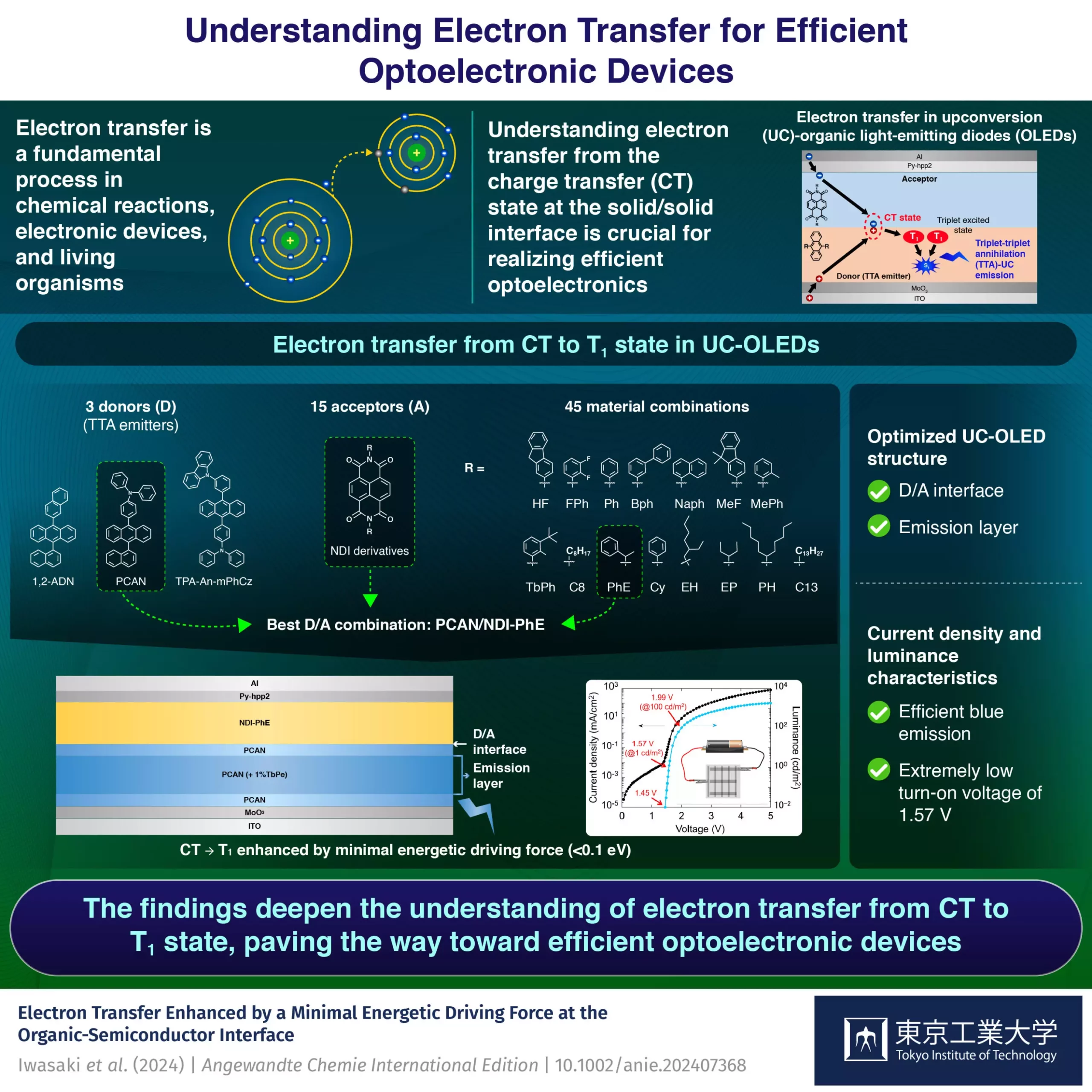Electron transfer is a crucial process that plays a significant role in various applications, from chemical reactions to electronic devices and biological systems. Understanding the dynamics of electron transfer steps is essential for enhancing the performance of optoelectronic devices, such as OLEDs and organic photovoltaics. One key intermediate step in the operation of these devices involves the charge transfer (CT) state, which is pivotal for the overall efficiency of the device.
A team of researchers from Japan recently conducted a study to investigate the electron transfer efficiency from the CT state to the triplet excited (T1) state in 45 UC-OLEDs. Their goal was to enhance the understanding of the mechanisms underlying electron transfer in these devices. Through their analysis, they identified a novel donor-acceptor combination, PCAN/NDI-PhE, which led to the fabrication of an efficient blue UC-OLED with an exceptionally low turn-on voltage of 1.57 V.
The findings of this study provide valuable insights into the energetic and structural factors influencing electron transfer efficiency in UC-OLEDs. By utilizing the Marcus theory and experimenting with different material combinations, the researchers were able to achieve a deeper understanding of the electron transfer process from the CT state to the T1 state. This knowledge can be instrumental in the development of more efficient and stable UC-OLEDs in the future.
Implications for Optoelectronic Devices
The concept of upconversion OLEDs (UC-OLEDs) represents a promising advancement in the field of optoelectronics. By utilizing electron transfer from the CT state to the T1 state through triplet-triplet annihilation (TTA), these devices have the potential to address key issues such as high driving voltage and low stability. The efficient blue UC-OLEDs developed in this study demonstrate the practical applications of understanding and optimizing electron transfer efficiency in optoelectronic devices.
The research conducted by Associate Professor Seiichiro Izawa and his team sheds light on the intricate mechanisms of electron transfer in UC-OLEDs. By systematically analyzing different material combinations and utilizing the Marcus theory, they were able to enhance the efficiency of these devices and deepen our understanding of electron transfer processes. This study paves the way for further advancements in the field of optoelectronics and opens up new possibilities for the development of next-generation OLEDs.


Leave a Reply